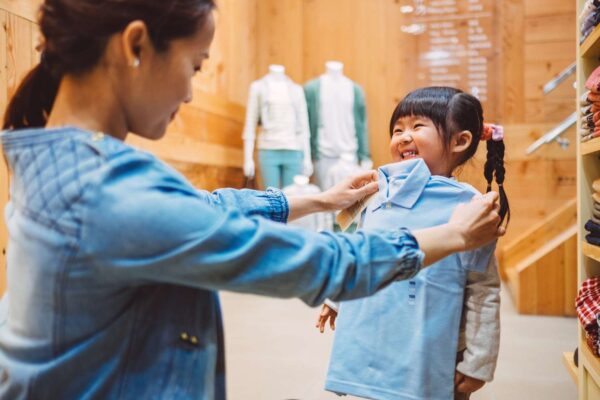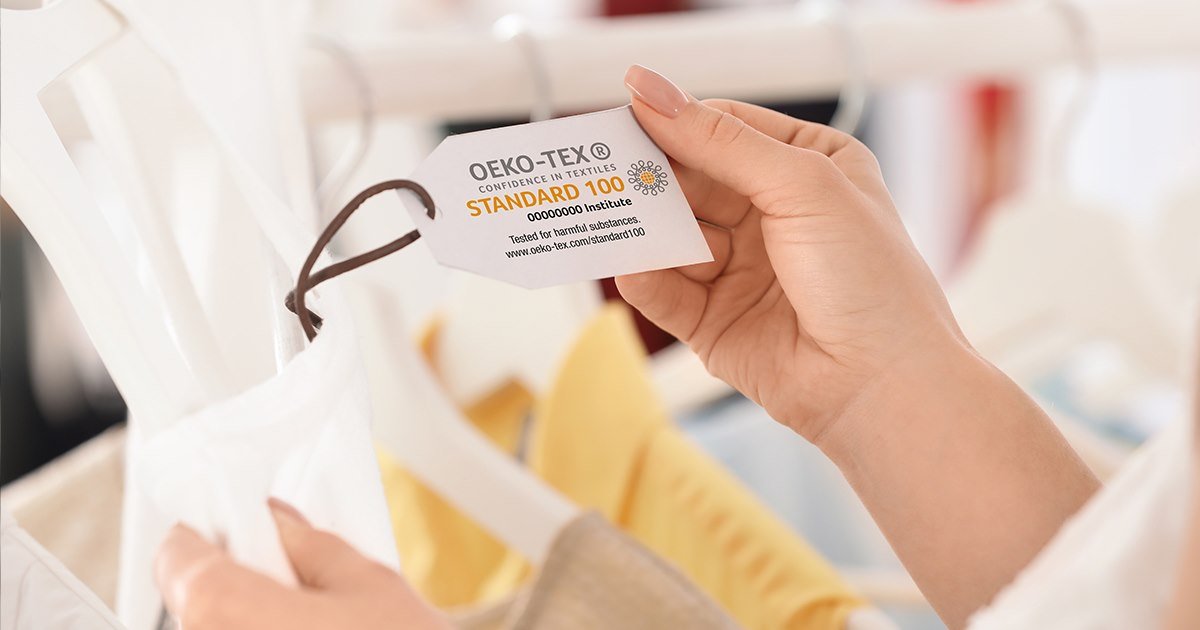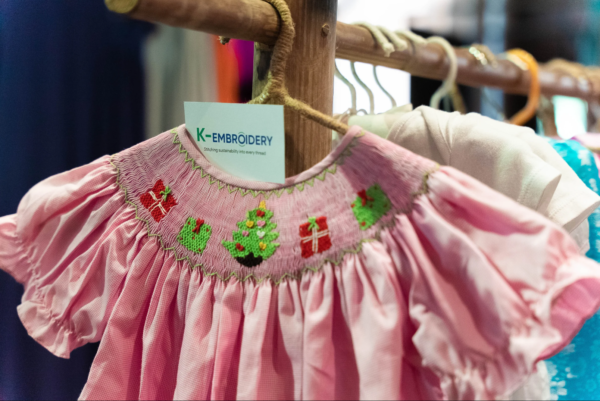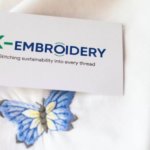How are chemicals on clothes entering children’s bodies?
More than 2/3 of the children’s clothes participating in the test contained harmful compounds (PFAS, aronmatic, formaldehyde, methyl chloride,…). This is the conclusion reached in a new study published in the journal Environmental and Science Technology.
This is unfortunate news and needs to be heeded by parents. Chemicals are entering children’s bodies every day, through many different ways, causing children’s health to gradually weaken.
Through which pathways are the chemicals on clothes entering into children’s bodies?
Chemicals used in textiles can enter children’s bodies in a number of ways:
1. Absorbed through the skin
Chemicals present in textiles can find their way into children’s bodies through various routes. One significant pathway is absorption through the skin. As the largest organ of the body, the skin plays a crucial role in this process. When it comes into contact with fabrics containing chemicals, especially the delicate and sensitive skin of babies, absorption is more likely to occur. Research indicates that substances like dioxins can be absorbed by the skin when wearing clothes treated with such chemicals.

2. Breathe
Chemicals used in the textile industry can also pose a threat when they evaporate at room temperature, leading us to inhale them. Among these chemicals are substances like formaldehyde, methyl chloride, and various chlorinated organic compounds, all of which have significant implications for both health and the environment. It’s worth noting that these chemicals don’t evaporate immediately; instead, they can linger in the air for extended periods, sometimes even years.
An example illustrating this phenomenon is the aftermath of the September 11, 2001 attacks at Ground Zero. Tests conducted in the area showed elevated levels of certain chemical compounds up to two months post-attack, with continued evaporation observed until 2002. Additionally, the process of chemicals evaporating can lead to the formation of unknown substances through chemical reactions. It’s important to recognize that chemicals don’t exist in isolation; they can be influenced by factors such as heat, light, oxygen, and interactions with other chemicals.
Remarkably, research conducted at Ground Zero revealed the presence of previously unidentified chemicals, such as 1,3-DPP, in ambient air samples. Scientists are still grappling with understanding the precise combination of factors responsible for their formation.
3. Abrasion
Microscopic particles of fabric can be released into the air when textiles undergo wear and tear, making it possible for individuals to inadvertently ingest or inhale them. Manufacturing processes often involve the use of non-volatile chemicals, including heavy metals found in dyes, polymers, and other synthetic components like PVC (polyvinyl chloride), commonly known as vinyl.
Each time we interact with these fabrics—whether by sitting on a sofa, walking on a carpet, or drying ourselves with a towel—the friction can cause tiny fragments to break off and become airborne within our homes. Consequently, we may unknowingly consume or breathe in these particles. This exposure is particularly concerning for babies and pets, who may be more susceptible to the effects of these substances.

Solutions to avoid children’s clothes containing harmful chemicals
In today’s market, children’s clothing often boasts a range of convenient features like wrinkle or shrink resistance, fire resistance, waterproofing, stain resistance, mildew resistance, or non-stick properties. However, the trade-off for better clothing performance usually comes with a lot of harmful chemicals.
The fashion and textile industries grapple with a multitude of toxic chemicals, many of which remain unregulated. Despite the recognition of certain carcinogens, such as formaldehyde linked to cancer, most brands continue to manufacture overseas where regulations are less stringent. Furthermore, in the United States, only the most severe chemicals are subject to regulation, leaving a significant number of potentially harmful substances uncontrolled and posing risks to children’s health.
1. Check the product’s ingredient label
When checking the product’s ingredient label, keep an eye out for specific indicators. If your garment is labeled as “undyed” or “natural,” it typically means that it doesn’t contain AZO dyes, which can be harmful. Additionally, consider opting for clothing that hasn’t been treated with anti-stain chemicals. For sportswear, seek out terms like “synthetic aromatherapy free” or “essential oil only” to ensure a safer and more natural option.
2. Learn about product certification

Look for products with GOTS, and OEKO-TEX certificates. They are the 2 most prestigious certifications in the world, helping to test and remove harmful substances in textiles and protecting consumers’ health and the environment. In addition, the testing criteria for the certification are updated annually according to the latest law formulation and research, including:
- Illegal substances such as dyes/colorants contain carcinogens.
- Legally regulated substances such as heavy metals (lead, mercury, etc.).
- Substances are known to be harmful to health but not yet regulated/prohibited by law, such as pesticides and dyes that cause allergies (causes of allergies).
- Specifications such as color durability and skin-friendly pH (friendly to sensitive skin). These are preventive methods to protect consumer health.
3. Use non-toxic laundry detergents
Many washing products contain ammonia. Although ammonia has beneficial effects on the body, overexposing it can cause liver and kidney damage as well as eye and skin irritation. It is best to use chlorine-free bleach and chemical-free washing products.
4. Wash children’s clothes before wearing
Washing clothes before first wear will wash away left dye and reduce your exposure. It also removes about 60% of the formaldehyde on the finished garment.
5. Choose a reputable brand
Seek out clothing brands that prioritize the exclusion of harmful chemicals like formaldehyde, PFCS, and phthalates, and hold safety certificates as evidence of their product safety.

One such brand is K-Embroidery, a reputable manufacturer specializing in hand-smocked and embroidered children’s clothing with over 25 years of industry experience. Located at No.169, Nguyen Ngoc Vu Street, Cau Giay district, Ha Noi, Viet Nam, our expertise lies in crafting boutique-quality garments exclusively tailored for babies, which are distributed worldwide.
As a leading OEM/ODM Clothing Manufacturer, we excel in translating your custom clothing concepts into reality. From conceptualization to production, including custom design, pattern making, grading, fabric and trim sourcing, custom label and tag development, sampling, embroidery, and printing, we offer comprehensive services. With our commitment to “Quality is King,” we assure the delivery of high-quality embroidered and smocked garments for children, setting us apart from the competition.
What’s special about K-Embroidery is that we provide products that are 100% safe for children’s health according to STANDARD 100 by OEKO-TEX®. Therefore, we are always the top choice for any brand wishing to sell children’s clothing.
Refer to K-Embroidery product samples at Our Catalog.
If you still have questions that need answering, do not hesitate to comment below the article or contact us via WhatsApp +84 85 555 5961.


